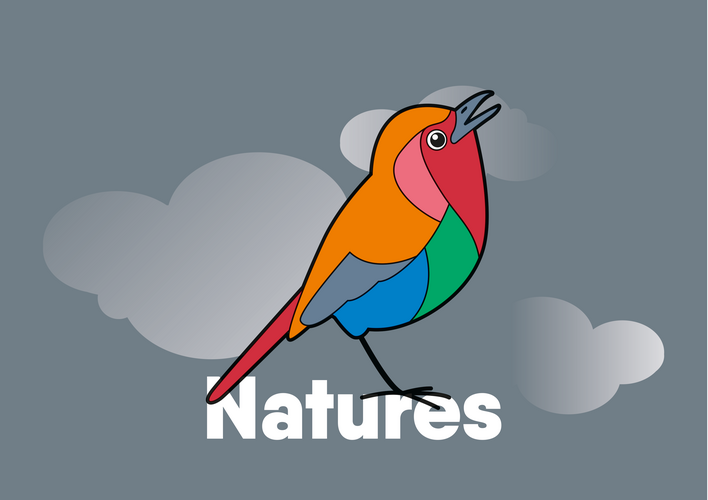Natures 2024
Natures
For centuries, just like painters and poets, musicians have drawn inspiration from nature. Whether it is singing the alternation of day and night, making the cycle of the seasons or the majestic course of rivers heard, suggesting the emotion that arises from contemplating a starry sky or the roaring of the tumultuous elements, music, while not being able to completely and easily imitate nature, has often tried to echo it.
An emblematic figure among others, the poet and musician Orpheus symbolises the perfect harmony between Mankind and the World. His singing has been known to tame animals, even the wildest ones, before triumphing over death. Beyond purely zoo-organological considerations (bows made of horsehair, skins for timbals, feathers for jacks and mouthpieces for harpsichords…), the references to the animal kingdom abound in musical literature, at any given period. Baroque music, and in particular works dedicated to harpsichordists, abound in bestiaries of all kinds. The use of instruments designed to imitate animal cries or bird songs is very common. The Creation from Haydn comes to mind, rich in animal paintings, from lions to doves, or the obvious Carnival of the Animals from Camille Saint-Saëns. Closer to us, Guillaume Connesson’s Jurassic Tripconfronts us with a new kind of bestiary. As for Messiaen, he claimed that his composing masters were the birds themselves. The extraordinary “Catalogue” he dedicated to them bears witness to his interest in the various ecosystems of our planet. Maybe we are presented with the opportunity to study the animal side that resides in each and every one of us?
In general, the musical evocations of nature are in fact articulated around the idea we have had of them over the centuries. In the Middle Ages, nature as a divine creation was the place of ideal Beauty. Imitating nature meant building a musical order that reflected the order of the World. The Renaissance saw the completion of this imitative tradition of nature. The scientific disruptions of the 16th and 17th centuries and the (culmination of the) Enlightenment led us to see nature no longer as an immanent force, but as a kind of great book written in mathematical language. A whole arsenal of rhythmic and melodic formulas was implemented to suggest the idea of the movement of water, the singing of birds, hunting… The Four Seasons were among the most popular subjects in the 17th and 18th centuries, alongside pastoral scenes and other evocations of Arcadian universes, through which rustic life in the countryside was magnified by the prism of an exclusively benevolent nature.
With Rousseau, nature is embodied in the fantasy of an original primitivity that humanity has gradually corrupted. If the end of the 17th century already saw the spread of a significant number of works offering an aestheticised evocation of sometimes frightening natural noises (thunder, winds, roaring seas…), paintings of unleashed elements multiplied at the turn of the 18th and 19th centuries. The Sturm und Drang movement in Germany used them without reservation. At the same time, in the wake of Rousseau, criticism of the urban environment, a place of corruption and artifice, and a witness to the damage of civilization, became even more acerbic. To flee the cities for the fields, to find refuge in wilderness where hope of regeneration is still possible, such is the question that haunts composers! Beethoven, with his Pastoral Symphony, suggests an elsewhere far from the cities that it is desirable to reach. Schubert follows in his footsteps.
From this point forward, nature is no longer the great descriptive book whose mysteries must be revealed rationally. Man appears very small in the face of the omnipotence of the elements. Certain subjects are incidentally chosen for their spectacular potential. In communion with the forces - physical, telluric, magnetic - of nature, the individual no longer seeks to fight against them, but surrenders to them by giving them all his psychological projections. The end of the 18th century was also the time of the discovery of the high mountains and their great potential for inspiration. The forest, for its part, became the receptacle of all anxieties. At the same time, musicians travelled the roads of Europe and marveled at the power and diversity of the landscapes they crossed (Liszt and his Years of pilgrimage; The Hebrides and The Scottish Symphony from Mendelssohn…). With Chabrier (España), Albeniz (Iberia), Smetana (My Country), singing the beauties and virtues of a terroir, describing the picturesque of sound landscapes is highly ideological at a time of awakening nationalism.
Composers of the second half of the 20th and 21st centuries are interested, with movements such as sound ecology or bioacoustics, in the extraordinary laboratory of sounds offered by nature: streams, winds, insect rustles, animal cries, become their own sound material, hybridised or not within original compositions. Reaching out to the world with a microphone also contributes to the preservation of our environment. Faced with the damage caused by the Anthropocene and the gradual disappearance of species, it is a question of safeguarding what can still be safeguarded.
Interest in nature thus took on very particular forms in the 20th and 21st centuries. How, indeed, can we envisage the role of the composer at a time when new recording tools make it possible to capture and broadcast the sounds produced by nature itself? What can become of the relationship between nature and art once the latter is freed by technology from its mimetic role? More broadly, can the open air become the stage for a new kind of concert? Or again, from a very contemporary angle: do artists have a role to play at the heart of societies that place ecological issues and the climate transition at the center of the debate?
Practical info

Pricerange per day

Main target group

Surroundings

Average attendence per day

Art disciplines

